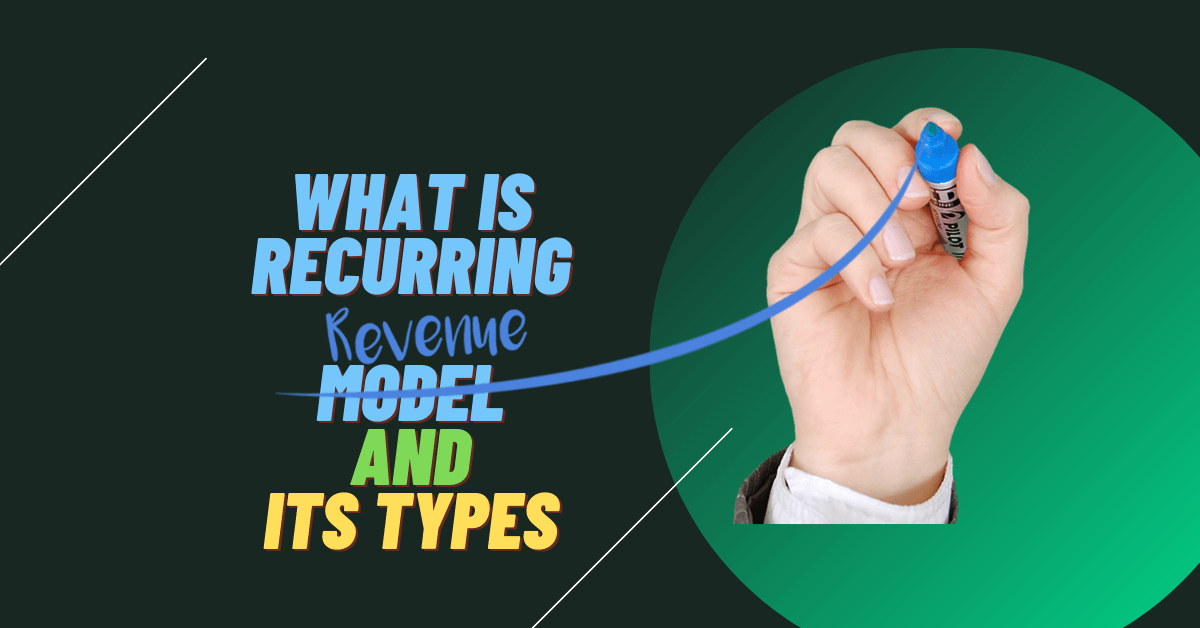The business landscape is in the middle of a significant paradigm shift as consumers are increasingly reliant on paying for access rather than paying for complete ownership. Many industries are starting to shift from the traditional one-time sales model to the modern-style recurring revenue model. This model allows businesses to produce consistent revenue by providing continuous access to their products or services by trading them regularly.
Before, the recurring revenue model was only limited to specific industries like movie subscriptions, music, and magazines. Today, it has become prevalent across various domains as varied as automobiles, clothing, furniture, groceries, and software.
An excellent example of a booming industry that takes advantage of the recurring revenue model is the automobile industry. Nowadays, customers can now subscribe to cars as a type of service instead of purchasing and owning a car outright. In fact, this type of business model is offered by big-name car companies like Audi, Nissan, and Porsche. In a car subscription, the vehicle insurance and maintenance costs are combined into a single monthly fee.
Unlike traditional leasing, in this modern-day model, the customers can switch cars during their subscription. That means during the duration of your subscription; you can use different cars instead of just one. This model benefits the car manufacturers by creating an additional channel for predictable income, allowing them to adjust to the ever-changing customer interests and demands quickly.
Table of Contents
ToggleWhat is Recurring Revenue Model?
Recurring revenue is a business model where the vendor provides access to a product or service in exchange for a scheduled fee. This fee is then charged at recurring intervals (weekly, monthly, quarterly, or yearly). This structure forms the base for membership services and subscription-based businesses.
Since customers are always purchasing the product or services on a monthly basis, it will ensure a sustainable profit and predictable cash flow for the business. Unlike traditional one-off sales, where the business relationship between the customer and the vendor ends after a single purchase or sale, the recurring business model helps ensure a longer and deeper connection with customers to achieve the highest level of customer satisfaction and retention.
Types of Recurring Revenue Model
With enticing perks like higher customer retention and steadier cash flow, the recurring revenue business model is something that will stick around for the foreseeable future. But for you to benefit from this business structure, you need to know which type of recurring revenue model works best for your business.
To give you an idea, here are the types of recurring revenue models, along with their pros and cons:
Usage-based Billing
In this type of recurring revenue, customers are charged for their usage on a regular-based schedule. Zapier is a globally renowned remote company that allows end-users to integrate with the web applications that they use. It’s a great example of a company that utilizes usage-based billing. Zapier’s pricing scale depending on how much you automate. It ranges from $0 to $250 per month.
Pros
- Enables the customer to save money even when there’s irregular usage.
- Offers excellent value for low to mid-volume users.
Cons
- Unpredictable revenue for business due to usage fluctuations
- Unpredictable costs that can surprise customers.
- This recurring revenue model may not provide good value for higher-volume customers.
Who it works for?
Usage-based billing works best for businesses that can track usage easily, whether it’s the number of APIs used or messages, invoices, or emails sent, or the number of activated triggers.
User-based Billing
Not to be mistaken with usage-based billing, user-based billing involves teams that pay for the number of “seats” or people using the product monthly or yearly. Atlassian is an excellent example of this recurring revenue model. It charges $7 a month per user for teams with more than ten people.
Pros
- Revenue is more predictable, and it also scales well for larger enterprise teams.
- Users don’t need to track usage rates.
Cons
- It can be a potential barrier for economic teams who plan to limit the number of seats to control costs.
- It doesn’t always go in line with a company’s product value, which means you’ll be leaving money on the table.
- Customers may end up paying for users who aren’t active, which is usually addressed by adding prorated credits for users who have become inactive in a billing cycle.
- Only charges for active use.
Who it works for?
Therefore, User-based billing is an excellent option for team collaboration or customer service tools.
Tiered Billing
As the name implies, this recurring revenue model is built around ‘tiers.’ Each level is created for a specific buyer persona, with its price being capped off. Once users hit their limit on a particular tier, they are then upgraded to the next tier. This new and higher tier offers more usage or functionality. HubSpot is a popular example of a business that uses this type of recurring revenue model. It has Basic, Pro, and Enterprise tiers that cater to the different needs of varying organizations and groups.
Pros
- It enables businesses to appeal to a broader range of users and their specific needs.
- There is always something for everyone.
- It also helps businesses read and understand where their target audience is found and where their customers see the most value.
Cons
- The phrase, ‘something for everyone is not always good.
- It has the potential to become complicated and sprawling very quickly.
Who it works for?
Therefore, it’s most commonly used by businesses offering sales or marketing products.
Hybrid Billing
This recurring revenue business model has a unique mixture of two or more revenue models. For example, both Atlassian and Zapier offer hybrid pricing, hitting specific usage levels or user numbers. This milestone will then require the user to upgrade to the next tiered plan (tier billing).
Pros
- A flexible option for structuring the pricing
- It allows businesses to conquer the disadvantage of a single model.
- It brings more nuanced pricing that’s aligned with the company’s values.
Cons
- It may bring in even more complexity to the fray
- Businesses need to take extra strides in keeping their hybrid models simple and straightforward enough for everyone to grasp and comprehend.
Who it works for?
Therefore, this works best for Software as a service (SaaS) companies where customers’ value from the service/product doesn’t fit into any single recurring revenue model.
Freemium
Finally, we have freemium – a recurring revenue model that offers a lifetime free plan with a premium upgrade. This offer converts random customers into paying ones. Dropbox, Evernote, and Buffer are a few examples of services that offer a freemium business model.
Pros
- Low entry barrier.
- It’s relatively easier and faster to acquire a sizeable customer base.
- Cons
- If businesses don’t assess this model thoroughly, they could easily run their operations at a loss servicing new customers.
- In addition, business that misuses this model might find themselves unable to give paying customers the time and attention they need.
- Freemium could potentially attract the wrong kind of customers who see the most value in what is “free” instead of considering the premium upgrade.
Who it works for?
Therefore, this recurring revenue model works best for businesses where the cost of servicing new customers on a free plan is relatively low. The potential is high for them to convert into paying customers within a certain period.
Recurring Billing
Recurring billing is a billing method that allows you to be charged for a service or product regularly. It can be a monthly, quarterly, or even yearly plan, however, with recurring billing, your customers don’t have to worry about remembering to pay their bill every month – the charge will automatically be processed on the schedule they choose.
Recurring billing is perfect for services like internet, utility, or cable TV. It’s also great for regularly used items like diapers or dog food. Recurring billing can save you time and hassle every month, while keeping your payment processing expenses to a minimum.
If you’re interested in setting up recurring billing for one of your services or products, then create a ReliaBills account and subscribe to ReliaBills PLUS today. We offer a great way to make your life a little bit easier by automating your payment processing so you won’t have to worry about billing customers again. For more information about ReliaBills, click here.
Benefits of Recurring Billing
Recurring billing is one of the hottest billing models today due to the number of benefits it brings to the table. Here are some notable benefits that recurring billing can provide your business:
- It doesn’t require manual payment each month.
- Recurring Billing can save time and hassle.
- It helps you budget your expenses more easily.
- It’s perfect for products or services used regularly.
The great thing about recurring billing is that it doesn’t require any manual input from you every month. The charge will automatically be processed on the schedule you choose. This is perfect for services you regularly use, like your internet or cable TV bill. It can also help you budget your expenses more easily since you know exactly how much money to expect each month.
Who It Works For?
You might be wondering, “is my business a good fit for recurring billing?” Below are three types of businesses that could benefit from this type of billing:
- Service providers (e.g., internet, cable TV)
- Product subscription services (e.g., diapers, dog food)
- Recurring event tickets (e.g., gym membership, theater tickets)
Essentially, recurring billing is the perfect billing model if your business has a:
- Regular service or product
- Predefined subscription terms
- Frequent, ongoing charges to customers
If you meet all three of the above criteria, recurring billing is likely an excellent solution for your business!
How to Get Started?
If you’re interested in setting up recurring billing for one of your services or products, then you can contact your provider and ask them how to get started. Recurring billing is a great way to make your life a little bit easier, since it can save you time and hassle every month and help you budget your expenses more easily.
ReliaBills is one of the leading invoicing and recurring billing platforms available today. We offer a wide range of features to help you get started with recurring billing, including the ability to:
- Create and send invoices
- Set up automatic payments
- Manage subscriptions and memberships
- Store customer data
If you’re looking for a comprehensive platform to help you get started with recurring billing, then ReliaBills is an excellent option. Check us out today!
How to Create a New Recurring Invoice Using ReliaBills
Creating a New Recurring Invoice using ReliaBills involves the following steps:
Step 1: Login to ReliaBills
- Access your ReliaBills Account using your login credentials. If you don’t have an account, sign up here.
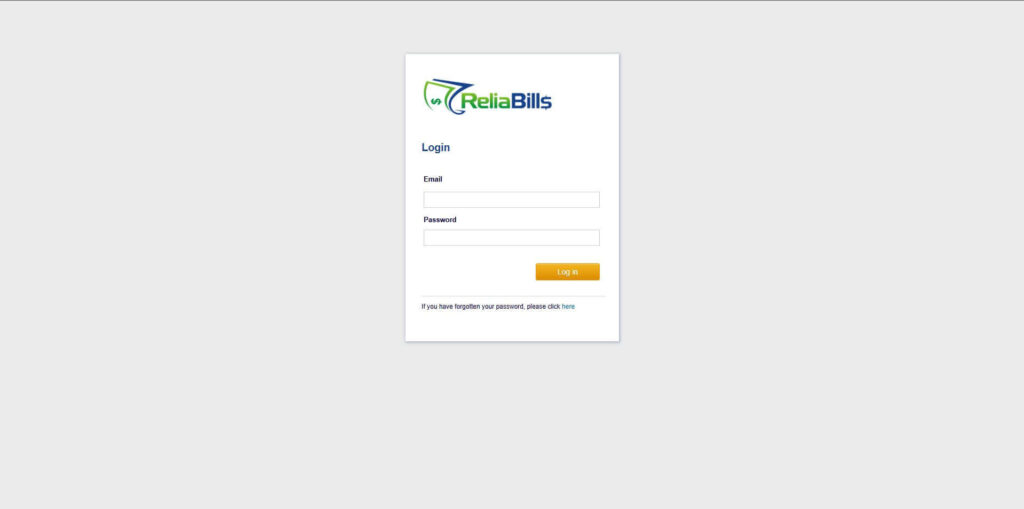
Step 2: Click on Recurring Invoices
- Navigate to the Invoices Dropdown and click on Recurring Invoices for an overview of the list of your existing customers.
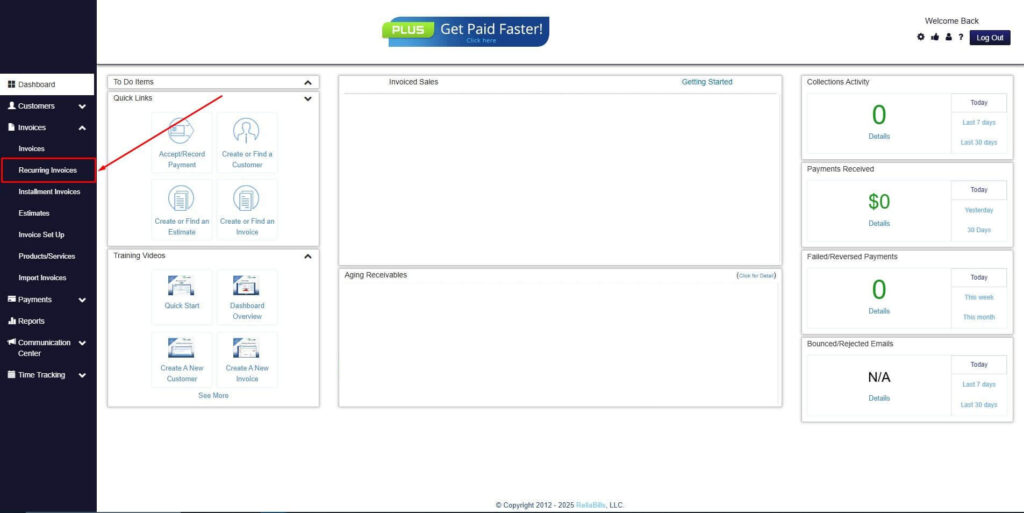
Step 3: Go to the Customers Tab
- If you have already created a customer, search for them in the Customers tab and make sure their status is “Active”.
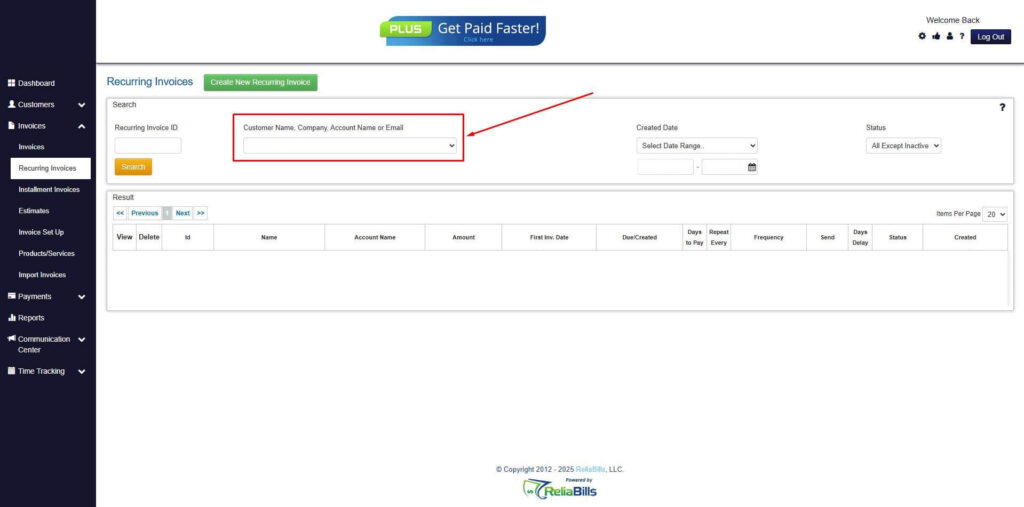
Step 4: Click the Create New Recurring Invoice
- If you haven’t created any customers yet, click the Create New Recurring Invoice to create a new customer.
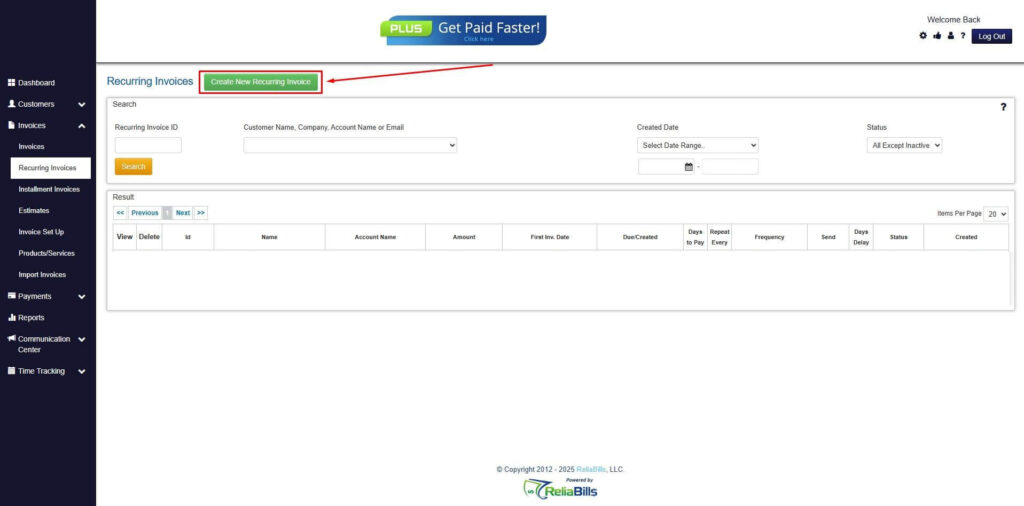
Step 5: Click on the “Click here” Button
- Click on the “Click here” button to proceed with the recurring invoice creation.
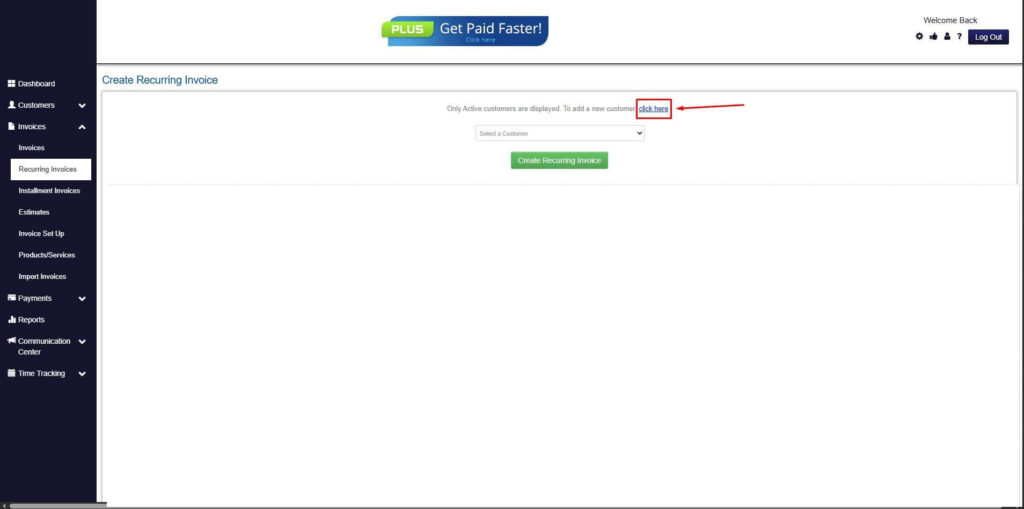
Step 6: Create Customer
- Provide your First Name, Last Name, and Email to proceed.
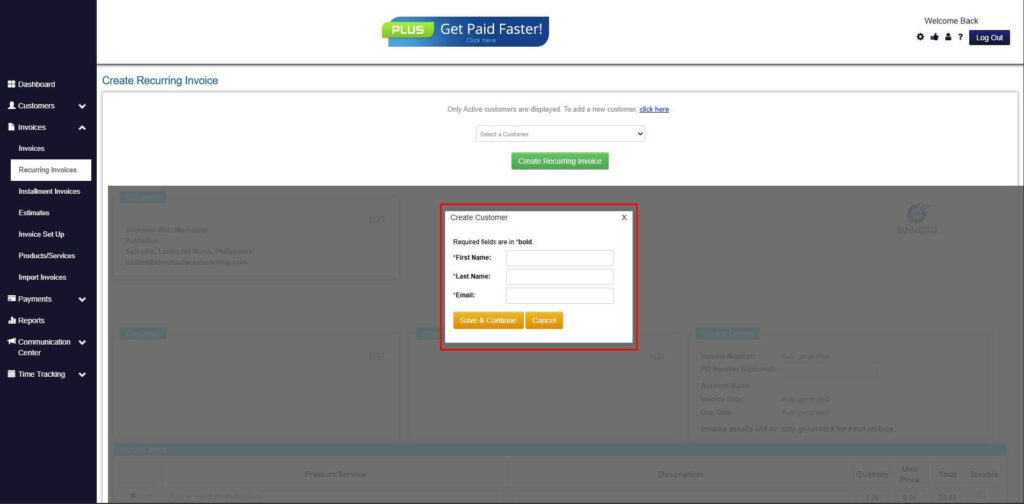
Step 7: Fill in the Create Recurring Invoice Form
- Fill in all the necessary fields.
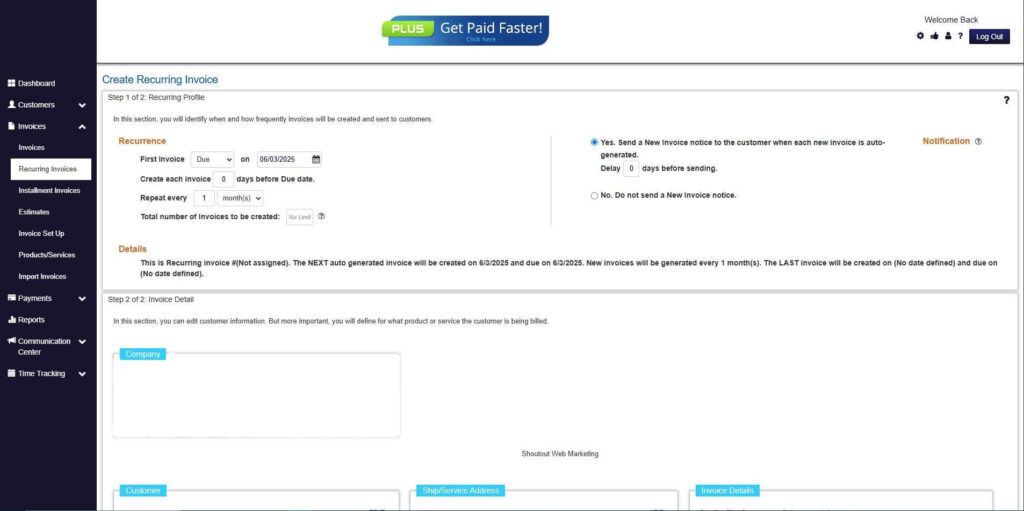
Step 8: Save Recurring Invoice
- After filling up the form, click “Save Recurring Invoice” to continue.
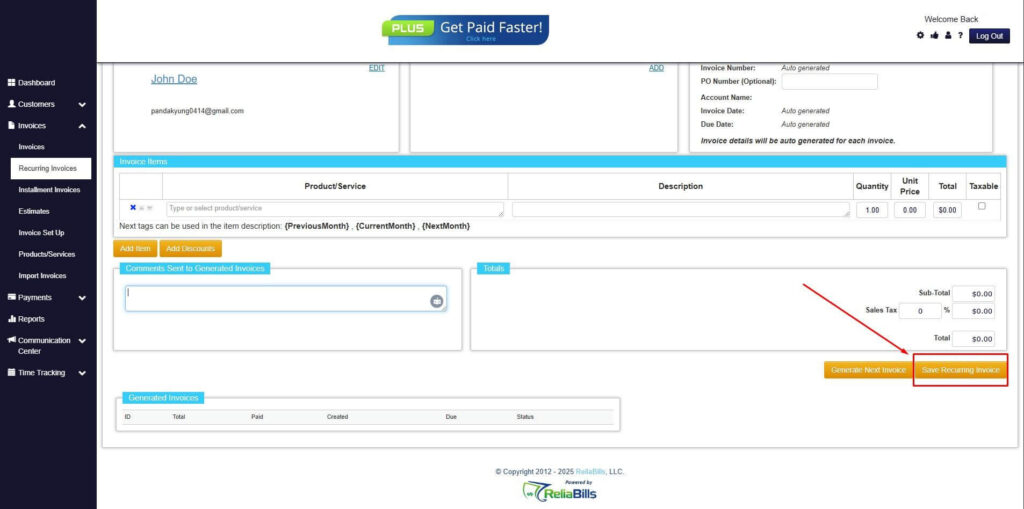
Step 9: Recurring Invoice Created
- Your Recurring Invoice has been created.
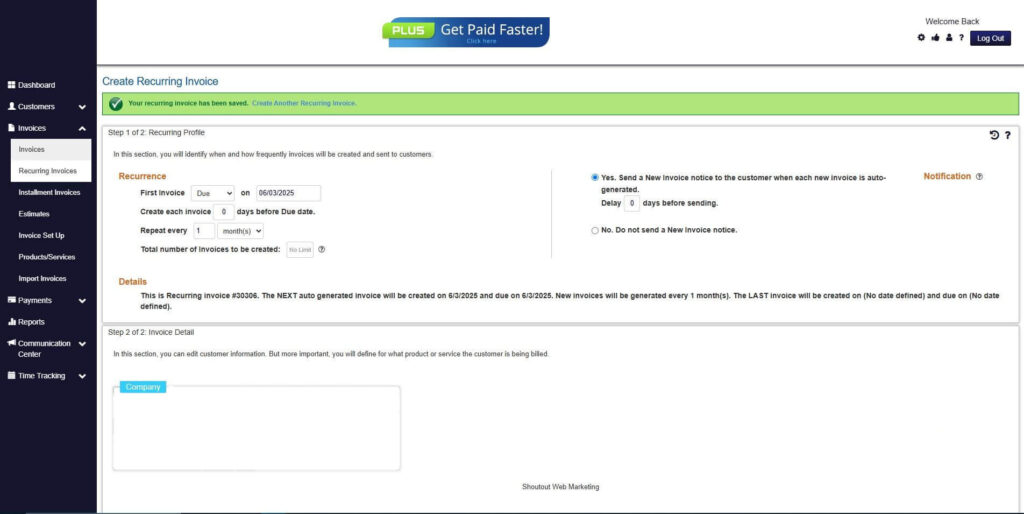
Wrapping Up
These are some of the notable types of recurring revenue models. Keep in mind that it will be the perfect billing structure once you find the right type for your business, while it may not be for everyone. So, make sure you do thorough research. Use this article as a good resource but don’t be afraid to look for other sources of information. For recurring billing software, ReliaBills is your best bet.

